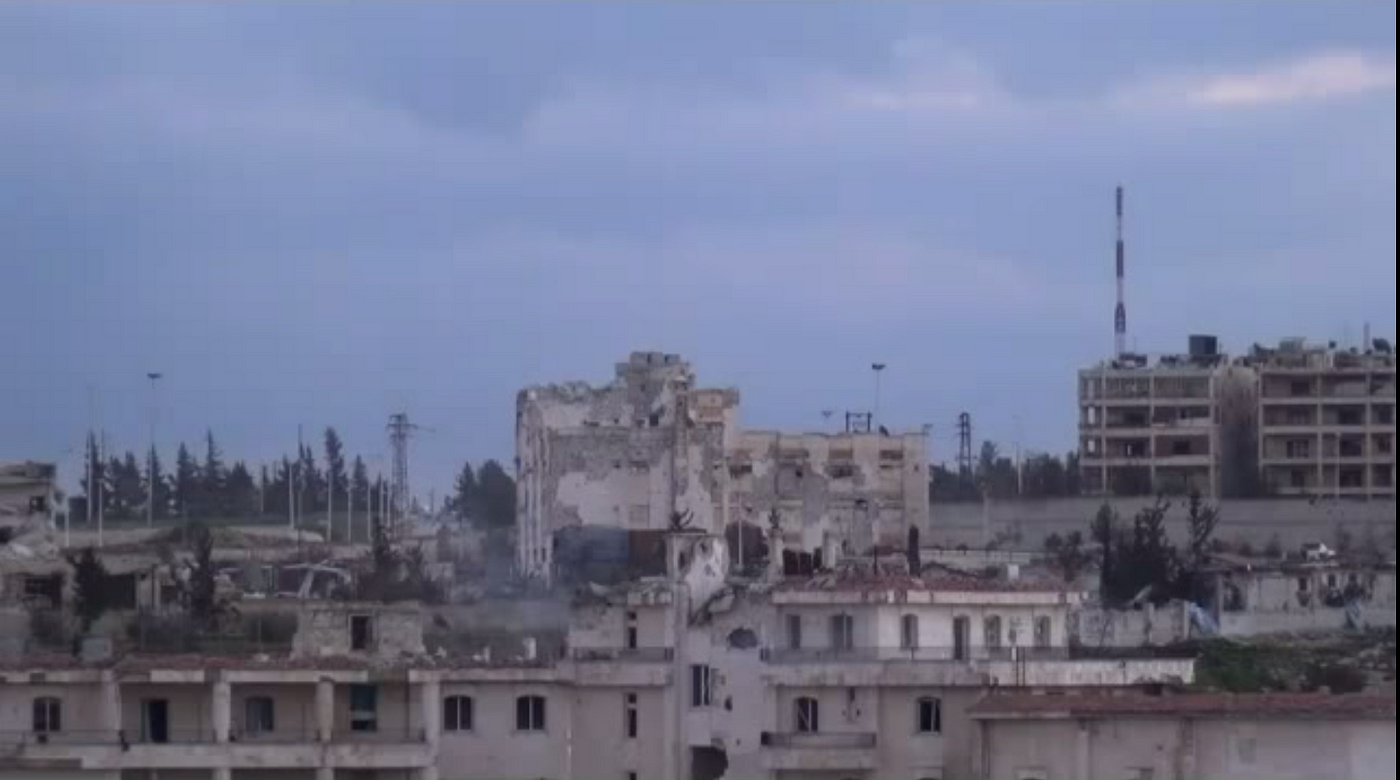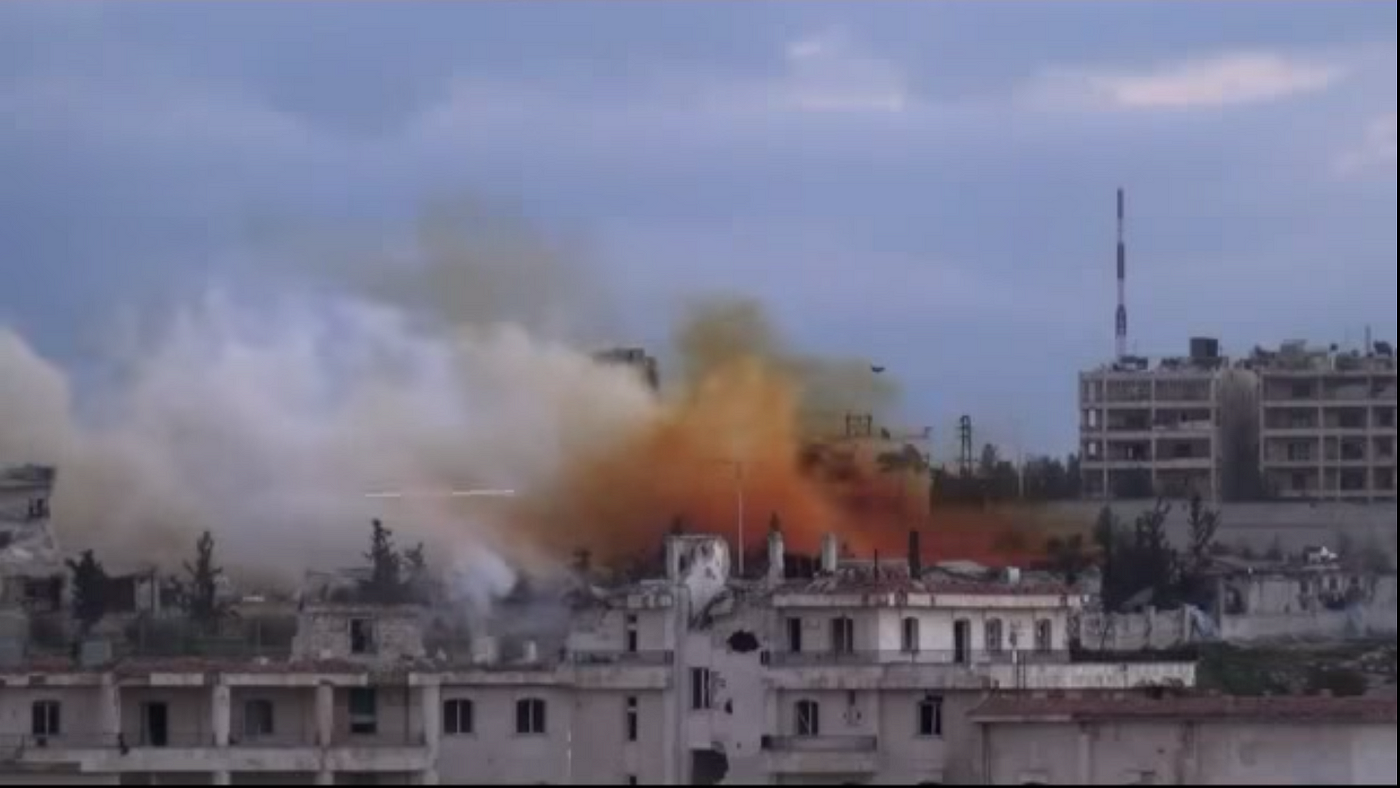Fighters combine an ancient tactic with modern weapons
On March 4 at 5:31 p.m., computer screens at the European Mediterranean Seismological Center lit up. A a 2.3-magnitude tremor had just rattled Aleppo in eastern Syria.
But it wasn’t an earthquake.
Rebel tunnelers had planted a huge stash of explosives under the Syrian Air Force Intelligence Directorate headquarters. The underground attack represented a powerful blow against the Syrian regime.
The explosion was a current adaptation of a medieval siege tactic. Pre-modern soldiers would dig a tunnel deep under an enemy castle’s walls, collapse the tunnel and bring down the castle along with it. Syria’s rebels do the same, but adding explosives to better collapse the tunnel.
Syrians captured the Aleppo explosion on video. The Syrian Observatory for Human Rights reported that 20 government soldiers and 14 rebels died in the blast and during an ensuing firefight.
Syrian rebels have long fought Bashar Al Assad’s regime on the ground. And now clever resistance fighters have opened another front … beneath the earth.
Tunneling is older than medieval — it’s actually an ancient battle tactic. One Syria’s rebels have eagerly adopted. Al Assad’s snipers and heavy weapons dominate the fighting above ground. It’s hard for rebels to make a move without the army noticing.
So the resistance fighters have moved the fighting underground.
They’ve carved a network of tunnels to move supplies, rescue wounded soldiers, communicate between besieged towns and even attack the foundations of regime buildings.
What helps is that Syria’s modern urban areas sit on layers of ancient structures. Aleppo has been continuously inhabited since the Copper Age — around 6000 B.C. — and Damascus is two millennia older than Julius Caesar.
Dig beneath the street, and there is always a possibility you’ll run into older buildings.
“There has never in the world been such a thick network of tunnels as there is in Syria,” Syrian academic Salim Harba told AFP in 2014. “It started in Homs in 2012, and the army has since discovered 500 of them. But I think there are twice as many.”
 Above — the collapse of the air force intelligence headquarters in Aleppo. Captures via YouTube. At top — a tunnel bombing of a Syrian military base on May 14, 2014. AP photo
Above — the collapse of the air force intelligence headquarters in Aleppo. Captures via YouTube. At top — a tunnel bombing of a Syrian military base on May 14, 2014. AP photo
Going underground makes sense for the rebels. The bombed-out landscape in Syria offers excellent cover to snipers, and walking across the wrong street can cost you your life. Barrel bombs and Al Assad’s helicopters add to the danger.
But tunneling in a war zone is dangerous. Regime troops keep a close lookout for tell-tale signs, such as mysterious mounds of earth. They also encourage civilian residents to report unusual sounds or vibrations.
If the soldiers detect a tunnel under construction, there are two options — destroy it from the surface, or dig a counter-tunnel.
Thus the regime has also resorted to tunneling. “The situation developed such that the opposition dug a comprehensive tunnel network reaching most government forces’ front-line positions,” the Qatari newspaper Al Arabi Al Jadid reported.
“The regime in turn dug a network of defensive tunnels to uncover any potential breaching of the front line via tunneling and in such cases, blowing up the rebel tunnels.”
In March, Twitter user Finriswolf reported a huge trench around the Aleppo city council’s tower. It was the work of regime diggers attempting to thwart rebel tunnel bombs. In an accompanying aerial image, large mounds of dirt lied on either side of the trench — a mistake that made the rebel passageway easy to spot.
Digging a new tunnel is both costly and time-consuming. In 2014, rebels deployed a tunnel bomb to blow up the Al Sahaba checkpoint in Idlib. “Thetotal cost of the tunnel under the Al Sahaba checkpoint was $336,000,”Arab Defense Journal reported.
Good battlefield tunneling is an intensive logistical operation. In Homs, the rebels have added telephone lines and sewage systems to their tunnels, according to the magazine.
“Around 100 young men worked on the [Idlib] tunnel,” Arab Defense Journaladded. “The equipment was primitive — electric compressors, pickaxes, electricity generators, lamps, flashlights, oxygen generators, oxygen tanks, loaders to remove the rubble and machines to lift the soil out.”
Digging the new tunnels is a pain in the ass, but it’s worth it. And as the fighting in Syria grinds on, it’s likely the rebels will keep on tunneling.
No comments:
Post a Comment